Dacia Jogger vs Renault Symbioz – Differences & prices compared
Compare performance, boot space, consumption and price in one view.
Find out now: which car is the better choice for you – Dacia Jogger or Renault Symbioz?
The Dacia Jogger (MPV) comes with a Full Hybrid, LPG or Petrol engine and Automatic or Manuel transmission. In comparison, the Renault Symbioz (SUV) features a Petrol MHEV or Full Hybrid engine with Manuel or Automatic transmission.
When it comes to boot capacity, the Dacia Jogger offers 607 L, while the Renault Symbioz provides 576 L – depending on how much space you need. If you’re looking for more power, decide whether the 140 HP of the Dacia Jogger or the 158 HP of the Renault Symbioz suits your needs better.
In terms of consumption, the values are 4.70 L per 100 km for the Dacia Jogger, and 4.50 L for the Renault Symbioz.
Price-wise, the Dacia Jogger starts at 15400 £, while the Renault Symbioz is available from 24400 £. Compare all the details and find out which model fits your lifestyle best!
In a captivating comparison between the Dacia Jogger and the Renault Symbioz, the focus shifts from practicality to innovation. While the Jogger impresses with its spaciousness and value for money, the Symbioz showcases cutting-edge technology and sustainability features that appeal to the modern eco-conscious driver. Both vehicles reflect their brands' distinct philosophies, catering to different market segments while highlighting the versatility of the automotive landscape.
Dacia Jogger
The Dacia Jogger offers a spacious and versatile interior, making it an excellent choice for families seeking practicality and comfort. Its design combines the robustness of an SUV with the functionality of an estate, providing a reliable option for various driving needs. With a focus on affordability, the Jogger ensures that essential features are accessible without compromising on quality.
details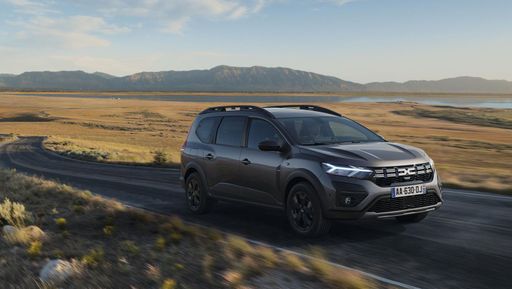 @ dacia-presse.de
@ dacia-presse.de
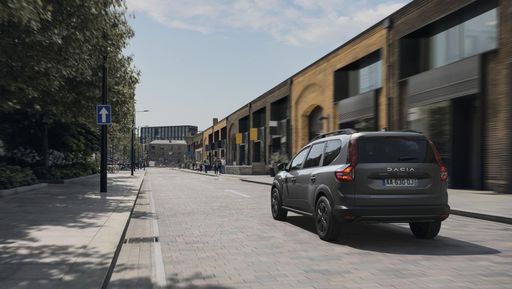 @ dacia-presse.de
@ dacia-presse.de
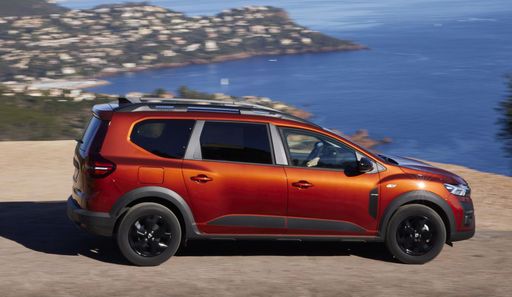 @ dacia-presse.de
@ dacia-presse.de
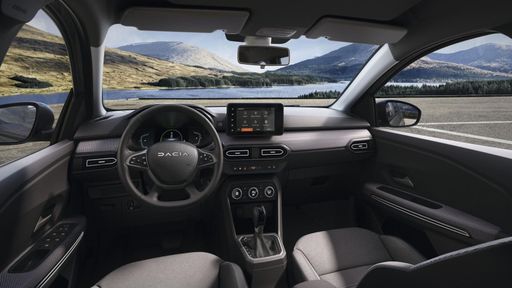 @ dacia-presse.de
@ dacia-presse.de
Renault Symbioz
The Renault Symbioz is an innovative concept car that explores the future of autonomous and connected driving. Its design seamlessly integrates indoor living space features with cutting-edge automotive technology, creating a comfortable and modern environment. The Symbioz highlights Renault's vision of an eco-friendly and connected mobility experience, paving the way for the next generation of smart vehicles.
details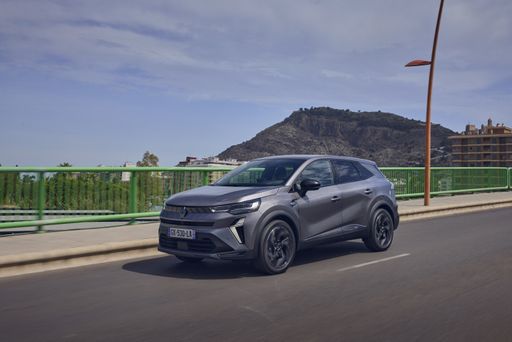 @ media.renault.at
@ media.renault.at
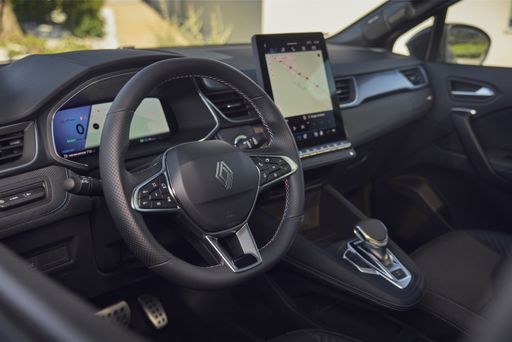 @ media.renault.at
@ media.renault.at
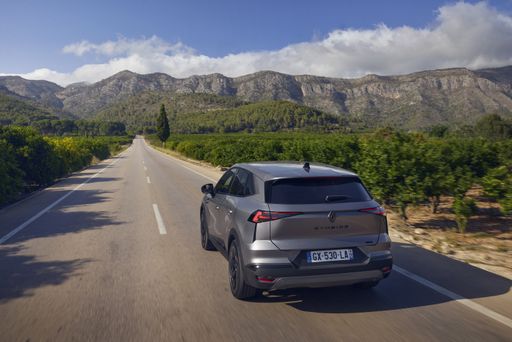 @ media.renault.at
@ media.renault.at
Introduction: A Clash of Versatility and Innovation
In the ever-evolving automotive landscape, two remarkable offerings have emerged from the Renault Group’s portfolio: the Dacia Jogger and the Renault Symbioz. While both vehicles share lineage, they cater to distinctly different markets and preferences. This comparison delves into the technical aspects, features, and innovations that define these two models.
Design and Dimensions
The Dacia Jogger, an MPV, boasts a practical design that caters to families and those requiring ample cargo space. Measuring 4547 mm in length and with a cargo capacity of up to 607 liters, it positions itself as a versatile transport solution.
On the other hand, the Renault Symbioz is a sleek, modern SUV with a length of 4413 mm. While slightly shorter, it still offers a respectable trunk capacity of 492 liters, making it a good option for city driving and weekend adventures.
Powertrains: Efficiency Meets Performance
Under the hood, the Dacia Jogger provides a range of engine options including a full hybrid, LPG, and petrol engines, with power outputs varying from 91 HP to 140 HP. This flexibility allows it to cater to diverse driving needs, whether through urban commuting or longer road trips.
The Renault Symbioz, on the other hand, is powered by a single full hybrid engine rated at 143 HP. This focuses on providing a smooth and efficient driving experience with impressive fuel consumption figures around 4.8 L/100km.
Transmission and Drive Experience
Both vehicles offer front-wheel drive configurations, making them suitable for a variety of road conditions. The Jogger comes with options for either an automatic or manual gearbox, while the Symbioz is equipped solely with an automatic gearbox, ensuring ease of use in urban settings.
Performance Metrics: Acceleration and Speed
In terms of performance, the Dacia Jogger showcases impressive numbers given its utility orientation, with a 0-100 km/h acceleration time ranging between 9.8 to 13.2 seconds depending on the engine choice. The top speed peaks at 167 km/h.
Conversely, the Renault Symbioz, with its hybrid focus, achieves 0-100 km/h in a respectable 10.6 seconds and has a maximum speed of 170 km/h. Both vehicles strike a balance between performance and practicality but cater to different driving experiences.
Technological Innovations
Technological advancements play a crucial role in today’s vehicles. The Dacia Jogger incorporated innovations such as advanced safety features and efficient hybrid technology, making it an appealing choice for family-oriented consumers.
The Renault Symbioz pushes the boundaries with smart connectivity and autonomous driving features, aligning with modern trends in vehicle technology. This focus on tech makes it attractive to tech-savvy customers seeking an innovative driving experience.
Environmental Considerations
As environmental awareness grows, both models offer commendable CO2 efficiency. The Dacia Jogger ranges from a CO2 output of 105 g/km to 137 g/km, depending on the engine configuration, while the Renault Symbioz presents a slightly lower output of 109 g/km, highlighting its hybrid technology benefits.
Conclusion: Choosing Between Family Utility and Innovative Technology
The Dacia Jogger and Renault Symbioz each have distinct advantages that appeal to different segments of the market. The Jogger stands out as a versatile family vehicle, prioritizing space and practicality, while the Symbioz offers a glimpse into the future with its hybrid technology and innovative features. Ultimately, the choice between these two vehicles boils down to personal preferences—whether you seek the robustness of an MPV or the cutting-edge experience of a modern SUV.

|

|
|
|
|
Costs and Consumption |
|
|---|---|
|
Price
15400 - 23400 £
|
Price
24400 - 30700 £
|
|
Consumption L/100km
4.7 - 7.7 L
|
Consumption L/100km
4.5 - 5.9 L
|
|
Consumption kWh/100km
-
|
Consumption kWh/100km
-
|
|
Electric Range
-
|
Electric Range
-
|
|
Battery Capacity
0.60 kWh
|
Battery Capacity
-
|
|
co2
105 - 137 g/km
|
co2
102 - 134 g/km
|
|
Fuel tank capacity
40 - 50 L
|
Fuel tank capacity
48 L
|
Dimensions and Body |
|
|---|---|
|
Body Type
MPV
|
Body Type
SUV
|
|
Seats
5 - 7
|
Seats
5
|
|
Doors
5
|
Doors
5
|
|
Curb weight
1251 - 1460 kg
|
Curb weight
1436 - 1544 kg
|
|
Trunk capacity
160 - 607 L
|
Trunk capacity
492 - 576 L
|
|
Length
4547 mm
|
Length
4413 mm
|
|
Width
1784 mm
|
Width
1797 mm
|
|
Height
1674 mm
|
Height
1575 mm
|
|
Payload
393 - 582 kg
|
Payload
376 - 379 kg
|
Engine and Performance |
|
|---|---|
|
Engine Type
Full Hybrid, LPG, Petrol
|
Engine Type
Petrol MHEV, Full Hybrid
|
|
Transmission
Automatic, Manuel
|
Transmission
Manuel, Automatic
|
|
Transmission Detail
Automatic Gearbox, Manual Gearbox
|
Transmission Detail
Manual Gearbox, Automatic Gearbox
|
|
Drive Type
Front-Wheel Drive
|
Drive Type
Front-Wheel Drive
|
|
Power HP
91 - 140 HP
|
Power HP
140 - 158 HP
|
|
Acceleration 0-100km/h
9.8 - 13.2 s
|
Acceleration 0-100km/h
9.1 - 11.2 s
|
|
Max Speed
167 - 174 km/h
|
Max Speed
180 km/h
|
|
Torque
160 - 200 Nm
|
Torque
250 - 265 Nm
|
|
Number of Cylinders
3 - 4
|
Number of Cylinders
4
|
|
Power kW
67 - 103 kW
|
Power kW
103 - 116 kW
|
|
Engine capacity
999 - 1598 cm3
|
Engine capacity
1333 - 1789 cm3
|
General |
|
|---|---|
|
Model Year
2024 - 2025
|
Model Year
2025
|
|
CO2 Efficiency Class
C, D
|
CO2 Efficiency Class
D, C
|
|
Brand
Dacia
|
Brand
Renault
|
Dacia Jogger
Introducing the Dacia Jogger: A New Era of Affordable Versatility
The Dacia Jogger has revolutionised the automotive industry by combining practicality and cost-efficiency with innovative features. This multi-purpose vehicle is perfect for families and adventurers alike, offering remarkable versatility alongside a competitive pricing strategy.
Powertrain Options: A Broad Spectrum of Choice
Dacia provides a range of powertrain options to cater to diverse preferences. The Jogger comes equipped with a selection of full-hybrid and turbocharged petrol engines. The full-hybrid version delivers a robust output of up to 140 PS, coupled with an impressive fuel efficiency of 4.7 to 4.8 L/100km. For those preferring a conventional setup, the ECO-G petrol engines offer up to 110 PS, promising a reliable and economical drive with a fuel consumption ranging from 5.7 to 7.7 L/100km.
Innovation in Every Journey
One of the notable innovations in the Jogger is its intelligent use of space. The model boasts a generous seating capacity, comfortably accommodating 5 to 7 passengers, depending on the configuration. With features like adjustable seats and a large boot space extending up to 607 litres, the Jogger is designed to handle anything from family vacations to transporting bulky items.
Design and Comfort: More than Meets the Eye
The Dacia Jogger showcases a modern design, with a robust and aerodynamic silhouette. Measuring 4547 mm in length, it strikes a balance between spaciousness and manoeuvrability. The comfort of the Jogger is enhanced by its well-crafted interior, offering various amenities across different trim levels, including Expression and Extreme, available in both five and seven-seater configurations.
Performance and Handling: Tailored for Every Terrain
Equipped with front-wheel drive and a choice between manual and automatic transmissions, the Jogger assures a smooth driving experience. Its engines, offering up to 103 kW (140 PS), ensure adequate power delivery, while the model accelerates from 0-100 km/h in just under 10 seconds. With a top speed of up to 174 km/h, the Jogger is well-suited for both urban and highway driving.
Affordability and Economy: A Balanced Proposition
Dacia continues to uphold its reputation for affordability with the Jogger, offering a competitive price range between €17,900 and €26,400. This pricing, combined with low maintenance and operating costs, makes the Jogger a highly attractive option in the MPV market. Its monthly costs are estimated between €701 and €821, ensuring outstanding value for budget-conscious consumers.
Conclusion: The Versatile Choice
The Dacia Jogger is a vehicle that offers practicality, efficiency, and innovation without breaking the bank. With its diverse range of configurations and features, it is aptly capable of meeting a wide array of needs, whether for family tasks or everyday adventures. The Jogger is more than just a means of transportation; it is a testament to Dacia’s commitment to delivering quality and value.
Renault Symbioz
Discover the Future: The Renault Symbioz
As we transition into a new era of automotive technology, the Renault Symbioz stands as a beacon of innovation and sustainability. Designed with the modern driver in mind, this SUV redefines what it means to integrate elegant design with cutting-edge technology. Delve into the details of this impressive vehicle and see what sets it apart from the competition.
Unveiling Its Power: Hybrid Engine and Performance
At the heart of the Renault Symbioz is a full hybrid powertrain that combines efficiency with performance. The 143 PS engine, delivering 105 kW, ensures a smooth and responsive driving experience. Coupled with a front-wheel-drive automatic transmission, the Symbioz offers remarkable fuel economy at just 4.8 L/100 km, making it a top contender in the eco-friendly vehicle market.
Innovation Meets Design: Aesthetics and Aerodynamics
With dimensions measuring 4413 mm in length, 1797 mm in width, and 1575 mm in height, the Symbioz presents a striking and sleek profile. The vehicle marries form and function perfectly, enhancing aerodynamics while maintaining a comfortable and spacious interior. Its lightweight build, with a gross weight of 1498 kg, complements its agile handling and stability on the road.
Interior Elegance and Technology
The Renault Symbioz is not only about performance but also about offering a refined driving experience. The interior is meticulously designed to provide comfort for up to five occupants, boasting a generous boot space of 492 litres. High-quality materials and advanced infotainment systems enhance the driving experience, incorporating state-of-the-art technology seamlessly.
Bridging Sustainability and Performance
With CO2 emissions of 109 g/km and a CO2 efficiency class of C, the Renault Symbioz aims to reduce environmental impact without compromising on performance. Its 1.6-litre engine, composed of three cylinders, delivers a perfect synergy of power and efficiency, showcasing Renault’s commitment to innovative, responsible motoring.
Optional Trims: Tailoring to Your Preferences
Available in three distinct trim levels—Esprit Alpine, Iconic, and Techno—the Symbioz allows customers to customise their driving experience further. Each comes equipped with multi-mode automatic transmission options that cater to various driving styles, ensuring a tailored approach to modern driving needs.
Price and Availability
The Renault Symbioz is competitively priced, ranging between €32,550 and €35,450, depending on the selected trim. With its advanced features and cutting-edge technology, this vehicle provides significant value in the current automotive market.
Conclusion: A Vision of Tomorrow, Today
The Renault Symbioz is not just an SUV; it represents a commitment to a sustainable and technologically advanced future. By marrying superior performance with eco-conscious engineering, Renault has set a new benchmark in the automotive industry. The Symbioz is poised to captivate drivers around the world, embodying a seamless blend of innovation, efficiency, and style.
Which drive types are available for the Dacia Jogger?
Available as Front-Wheel Drive.
The prices and data displayed are estimates based on German list prices and may vary by country. This information is not legally binding.
